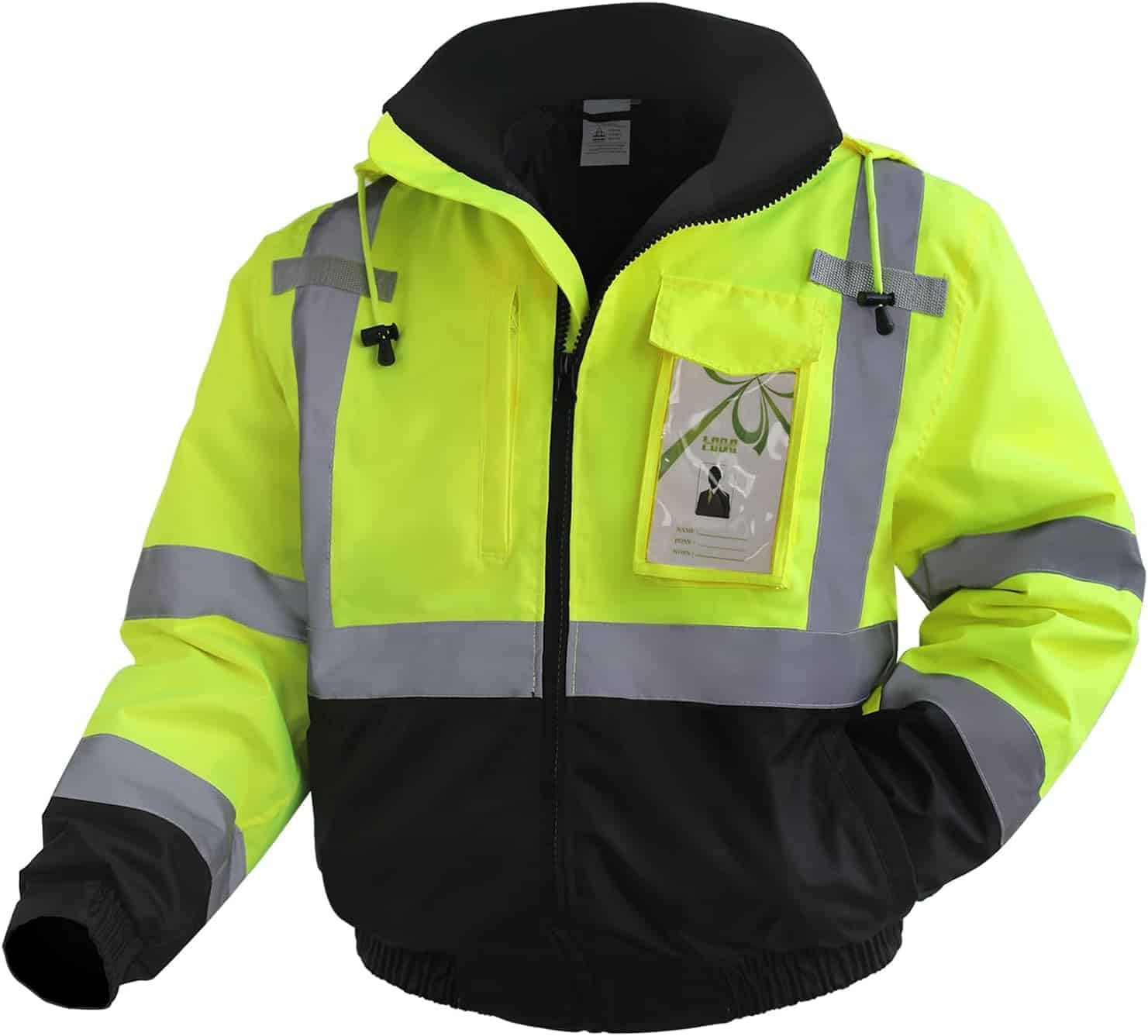When you’re working in construction, every piece of gear you wear must earn its keep, especially when the weather turns. One essential item no site worker should be without is a hi vis rain jacket. It’s not just about staying dry it’s about staying safe, seen, and productive, even when conditions are far from ideal.
Whether you’re overseeing a major infrastructure project or swinging a hammer in residential construction, a high vis rain jacket is a crucial part of your daily uniform. Let’s break down why it matters, what to look for, and how to choose the best one for the job.
Why Hi Vis Rain Jackets Are Non-Negotiable on Construction Sites
Table of Contents
1. Visibility Saves Lives
Construction zones are filled with moving vehicles, heavy machinery, and constant activity. Add fog, rain, or low-light conditions, and visibility becomes a serious safety issue. A hi vis rain jacket features high-contrast colors like neon yellow or bright orange, combined with reflective striping that stands out even in stormy or dim conditions.
OSHA and ANSI standards require workers in hazardous zones to wear high visibility garments for good reason: being seen means staying safe.
2. Weather Shouldn’t Stop the Work
Rain delays are costly. A crew can’t afford to lose an entire day due to weather, especially when project timelines are tight. A waterproof high vis rain jacket ensures you’re not soaked, cold, and miserable before your break. That means you can keep moving, keep working, and stay focused on the task.
3. Built for Function and Comfort
Today’s Safetyjackets are engineered for durability, breathability, and movement. Gone are the days of stiff, sweat trapping raincoats. Modern jackets use advanced fabrics and design features that allow for flexibility, airflow, and ease of wear, all while keeping out wind and rain.
Key Features of a High-Performing Hi Vis Rain Jacket
Not all high vis jackets are created equal. If you’re buying one for yourself or outfitting a team, keep these key features in mind:
ANSI Class Rating
Choose a jacket that’s ANSI/ISEA 107 compliant, ideally Class 3, which is recommended for highway work and high-traffic construction zones. It offers the most reflective coverage.
Waterproof and Windproof Materials
Look for jackets with a polyurethane coated outer shell, sealed seams, and waterproof zippers. These prevent rain penetration while still allowing moisture to escape from the inside.
Breathable Lining
Working in wet weather doesn’t mean you should feel like you’re inside a sauna. Mesh or moisture-wicking inner linings improve ventilation and comfort.
Adjustable Fit
Features like drawcord hoods, adjustable cuffs, and waist toggles let you tighten up during a storm or loosen up as needed.
Reflective Striping
Look for jackets with 2-inch silver reflective tape placed on the chest, arms, shoulders, and back. The more angles of visibility, the better.
Durability
Worksites are tough on gear. Reinforced stitching, ripstop fabrics, and abrasion-resistant coatings help your jacket stand up to daily wear and tear.
Pockets and Utility
Plenty of waterproof pockets, tool loops, or ID badge holders can help turn your jacket into a mobile workstation.
Best Use Cases: Who Needs a Hi Vis Rain Jacket?
Anyone working outside during wet conditions benefits from a good rain jacket, but it’s critical for these construction professionals:
- Highway and Road Crew Workers
- Bridge and Tunnel Construction Workers
- Demolition Crews
- Cranes and Equipment Operators
- Surveyors and Engineers
- General Contractors and Project Managers
In each of these roles, visibility is just as important as staying dry. A hi vis rain jacket helps ensure that safety and productivity go hand-in-hand.
Men’s vs. Women’s Hi Vis Rain Jackets
Unisex designs are common, but many brands now offer gender specific fits to improve comfort and mobility. Women’s hi vis jackets often feature a more tailored waist, narrower shoulders, and better sleeve to body ratios. This isn’t just about looks, it’s about reducing bulk and making it easier to move without snagging or overheating.
The Importance of Layering with a Hi Vis Rain Jacket
In colder climates, layering under your high vis rain jacket becomes critical. A good rain jacket should be roomy enough to accommodate:
- Thermal base layers
- Fleece mid-layers
- Safety harnesses
But it shouldn’t be so bulky that it interferes with motion or tool access. Some jackets even offer zip-in liners or modular layering systems, making them adaptable across seasons.
Choosing the Right Hi Vis Rain Jacket for Your Crew
If you’re a contractor, safety supervisor, or procurement officer, outfitting your team with quality rain gear is a smart investment. Here’s how to choose the best:
Evaluate Job Conditions
- Do workers face heavy rain, long hours, or night shifts?
- Is visibility reduced due to dust, fog, or vehicle traffic?
Prioritize Quality Over Quantity
Avoid low cost jackets with thin material and poor construction. These wear out quickly and can compromise worker safety and morale.
Ask for Feedback
Involve crew members in choosing gear. Ask about fit, comfort, and usability. They know better than anyone what works on site.
Product Spotlight: The Jacket That Works as Hard as You Do
If you’re looking for a trusted high vis rain jacket, here are some top features to prioritize:
- ANSI Class 3 Certification
- Durable 300D Oxford Fabric with PU Coating
- Fully Taped Seams
- Breathable Mesh Liner
- Detachable Hood
- Multiple Waterproof Pockets
- Mic Tabs and ID Badge Loop
- Two-Tone Color Blocking for Contrast
These jackets provide 360 degree visibility and protect workers from rain, wind, and abrasion ideal for any high-risk, all weather construction job.
Final Thoughts
A hi vis rain jacket isn’t just another piece of gear, it’s your first line of defense in challenging work conditions. It lets you stay safe, stay visible, and stay focused even when the skies open up. When your gear performs as hard as you do, you’re free to do what you do best: build, repair, lead, and get the job done no matter the weather.





